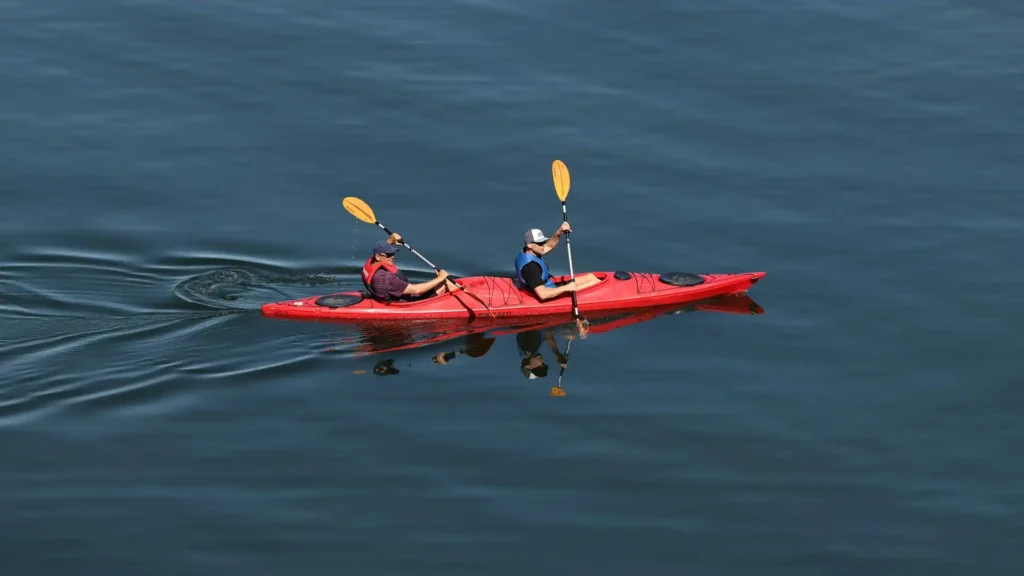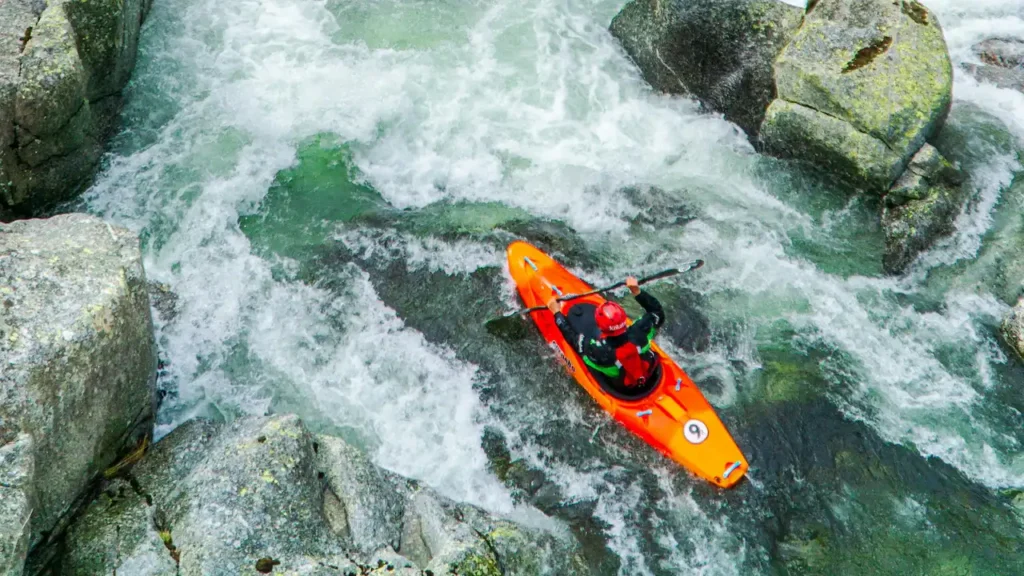Do you love outdoor activities? Kayaking and canoeing are two of the most popular options in today’s era. Both provide an excellent way to explore nature, exercise, and connect with water environments.
However, kayaks and canoes have distinct differences.
Design and Structure
Kayak | Canoe |
A kayak is typically a closed-deck boat with a lower profile. It features a cockpit where the paddler sits, and their legs are extended straight in front. | A canoe, on the other hand, is an open-deck boat with higher sides. The paddler usually kneels or sits on a seat that is positioned higher above the water. |
Kayaks are generally more compact. They have a slim and narrow shape. It allows the kayaks for faster movement through water. | Canoes tend to be wider and longer than kayaks. They offer more room for passengers or gear. |
The seat in a kayak is positioned lower to the water, which provides increased stability and control, especially in rough conditions. A single kayak is, generally, ideal for a single passenger and not for group sitting. | This makes them an ideal choice for group outings, longer trips, or carrying large amounts of equipment. |
Paddling Technique
Kayak Paddle | Canoe Paddle |
In a kayak, paddlers use a double-bladed paddle. | Canoeing involves the use of a single-bladed paddle. |
Each stroke involves both blades, and the paddler alternates sides to keep the boat moving straight. | Paddlers in a canoe typically alternate sides, or one person can paddle on one side while the other paddles on the opposite side, depending on the number of people in the canoe. |
The double blades allow for efficient paddling with less effort and more speed, making kayaks well-suited for faster-moving water and longer distances. | The single blade requires more coordination and energy. This process makes the moving slow, but offers greater control, particularly in shallow or rocky waters. |
Stability and Maneuverability
Kayak Stability | Canoe Stability |
Kayaks are considered stable when moving due to their lower center of gravity. | Canoes are typically more stable when stationary or in calm conditions, especially when paddled by two or more people. |
The immaculately crafted design allows kayakers to feel more secure in rough waters, especially in white-water rafting or during ocean kayaking. | The wider beam of a canoe gives it greater balance and makes it less prone to tipping. |
However, while they are stable, kayaks can be more difficult to get in and out of, especially in deep water, due to their lower position. | However, canoes are open boats. So, it’s easier to get in and out. |
Seating and Capacity
Kayak Seating | Canoe Seating |
Most kayaks are designed for one or two people, with individual cockpits that can be adjusted for comfort. | Canoes typically offer seating for two or more people, with a spacious open area for gear, coolers, or other equipment. |
Some models offer sit-on-top designs, where paddlers sit above the hull, making them easier to get in and out of, particularly for beginners or in warm weather conditions. | The seating arrangement is often higher and more comfortable, which is beneficial for long trips or when carrying children or pets. |
Kayaks are ideal for solo adventurers or pairs seeking a personal, compact experience. | Canoes are ideal for group outings. It can provide more storage space and can hold more weight compared to kayaks. |
Preference of Water and Activities
Water Preferences for Kayaks | Water Preferences for Canoes |
Kayaks excel in fast-moving water, like rivers, rapids, and ocean surf. | Canoes are typically favored for calm water conditions like lakes, ponds, and slow-moving rivers. |
They are highly agile and capable of handling rough, turbulent conditions. | They are more popular for leisurely paddling, fishing, or family outings. |
There are also specialized kayaks for different activities, such as sea kayaking, white-water kayaking, and touring. These specialized designs make kayaks ideal for more extreme sports and adventure paddling. | The larger capacity and stability make canoes well-suited for camping trips where you need to transport larger amounts of gear or food. |
Portability and Storage
Kayak Portability | Canoe Portability |
Kayaks are generally more portable than canoes due to their lighter weight and smaller size. | Canoes are heavier and bulkier than kayaks. They requires extra effort to carry. |
They can be easier to transport on car roofs, in trailers, or even in a large bag for inflatable models. | Transporting a canoe can be more challenging, especially for solo travelers. |
Their compact nature makes them suitable for solo paddlers who might be traveling with limited space. | The extra storage space and ability to carry larger loads might outweigh the portability concern for those planning extended trips. |
Skill Level and Experience
Kayak Skill | Canoe Skill |
Kayaks are ideal for those who are looking for speed, precision, and an adrenaline-fueled experience. | Canoeing is generally considered to be easier for beginners, particularly for families or casual paddlers. |
They do require some skill to balance and maneuver, particularly in rough conditions. | The stability of the canoe and the more natural sitting position allow for a comfortable experience. |
Beginners may want to start with a wider, more stable kayak or take a lesson to learn proper paddling technique. | Canoeing is a lot easier but a solo traveler can’t move the canoe. It requires more coordination to keep the boat straight. |
Ultimately, the choice between a kayak and a canoe depend on various issues like –
- personal preference
- the type of adventure you want
- your level of experience
Kayaks offer speed, maneuverability, and are perfect for solo or extreme adventures, while canoes are better for group outings, leisurely paddling, and carrying more gear.
By considering these factors, you can make an informed decision on which watercraft suits your needs best.




